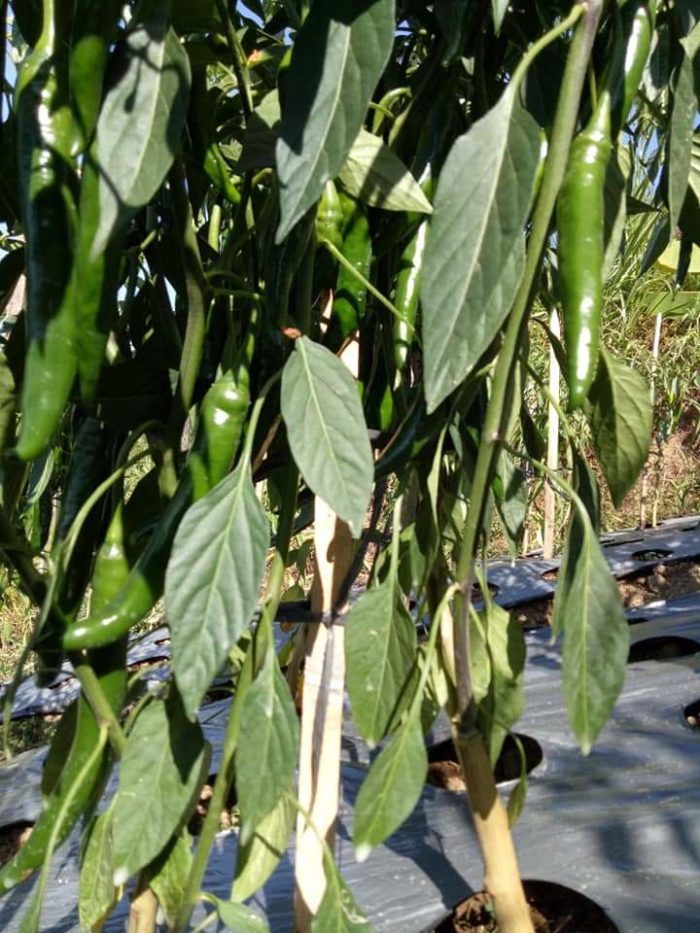The introduction of chemicals into agriculture has led to a rapid increase in crop yields. At first, the damage they caused to the soil was almost invisible, and the pests did not yet have immunity to chemicals. It led to the spread of this technology, which at that time was considered revolutionary.
Today, the interest in organic farming is renewed due to the many problems associated with traditional farming practices. These problems are health-related and include pollution, soil and water degradation, and harm to domestic animals.
What is organic farming? It’s a practice that involves growing plants and raising animals naturally, using biological materials instead of synthetics. This method helps maintain soil fertility and ecological balance and minimizes pollution and waste.
Advantages & Disadvantages of Organic Farming
As can be understood from the organic farming definition, this practice involves the production of food in the most natural way without genetically modified organisms, which scares many consumers. In addition, growers who choose this type of farming do not use synthetic fertilizers and pesticides but work with the soil to create healthy ecosystems and prevent erosion.

Organic farming methods do not rely on pesticides, herbicides, and synthetic fertilizers, making crops more resistant to pests, weeds, and diseases. It also reduces production costs and makes this type of farming more sustainable and environmentally friendly than traditional agriculture. Additionally, natural substances are used for fertilizing crops, making organic agriculture a better choice for the future.
Practices of organic agriculture promote the natural production of nutrients, making it possible to grow foods with a higher nutritional value. These methods also provide a safer and healthier work environment for people.
Organic growing has numerous advantages, but it also has some drawbacks. One major disadvantage is the cost of acquiring equipment and meeting regulatory standards to certify and sell products as organic.
Organic produce is typically more expensive than the traditional one. Additionally, many countries have strict regulations for organic farming, making it challenging for farmers to comply. Due to infrastructure limitations, it can prevent farmers from transitioning to organic farming even if they are willing to do so.
This farming practice also requires expertise to manage pests without chemical pesticides. The high level of knowledge and experience is crucial to maintain sufficient crop yields and control pests effectively. As a result, farmers must acquire extensive knowledge to succeed in organic farming.
Various Approaches to Organic Farming
When comparing traditional agriculture and organic farming, it’s important to note that they blend modern technology with practices based on natural biological processes. Organic farming aims to increase sustainable production in a pollution-free environment while obtaining a yield with high nutritional value.
Crop rotation involves changing crop types in the same field each season, which can offer many benefits over monoculture. This practice can help to resist pest infestations and erosion while promoting nutrient release and reducing the need for synthetic fertilizers. It also can help to reduce costs.
Green manure is used to enrich the soil with organic matter. Farmers commonly use cover crops as green manure, allowing them to remain on the field surface and serve as mulch. Green plants enrich the soil with nitrogen and nutrients that benefit microorganisms, promoting soil quality and reducing weed growth. Animal manure and compost can also enhance the soil health.
Organic farming relies on integrated weed management which prohibits the use of chemicals. Instead, weed control measures include prevention, hand weeding, mulching, and crop rotation to prevent weed growth. Similarly, integrated pest management focuses on alternative control measures rather than eliminating pests, which can disrupt the ecosystem. It can include natural barriers, physical removal, and the use of mild pesticides that are safe for the environment and humans, such as citronella, baking soda, and lavender oil.
Cover crops are a trustworthy option for maintaining soil health. They are grown between planting seasons of key crops or between rows throughout the year. It helps to protect the soil from erosion and enhances soil aeration and water filtration. Cover crops comprise legumes, grasses, or a blend of many species.
Livestock management in organic farming prioritizes creating the most natural environment possible. Organic stock raising implies a refusal of growth stimulants, synthetic additives, hormones, GMOs, and inorganic feed.
EOSDA Crop Monitoring and Its Contribution to Organic Growing
Technologies applications in agriculture, including satellite data, can help to identify critical issues. It enables farmers to react on time and prevent damage to crops. EOSDA Crop Monitoring, developed by satellite analytics provider EOS Data Analytics, is an online tool that simplifies farming activities and assists decision-making.
The platform can help organic producers to track and compare changes in vegetation values over the years using historical data and reduce soil testing costs by responding promptly to the initial signs of erosion.
The Zoning feature enables the creation of vegetation and productivity maps and more accurately identify problem areas in fields. Scouts can then be sent to problem areas to inspect them in detail and share the results with other team members. Farmers can use the data they gained with the help of EOSDA Crop Monitoring to apply variable-rate seeds and fertilizers efficiently, reducing costs and increasing yields.
That platform’s features can help farmers to plan irrigation based on the specific needs of plants. Soil moisture data enable more rational water consumption, reduce costs, prevent accidental waterlogging, and increase yields.
EOSDA Crop Monitoring helps growers cope with the challenges they face in the organic approach to crop and livestock production, thus making it easier to learn and implement precision agriculture technologies.
